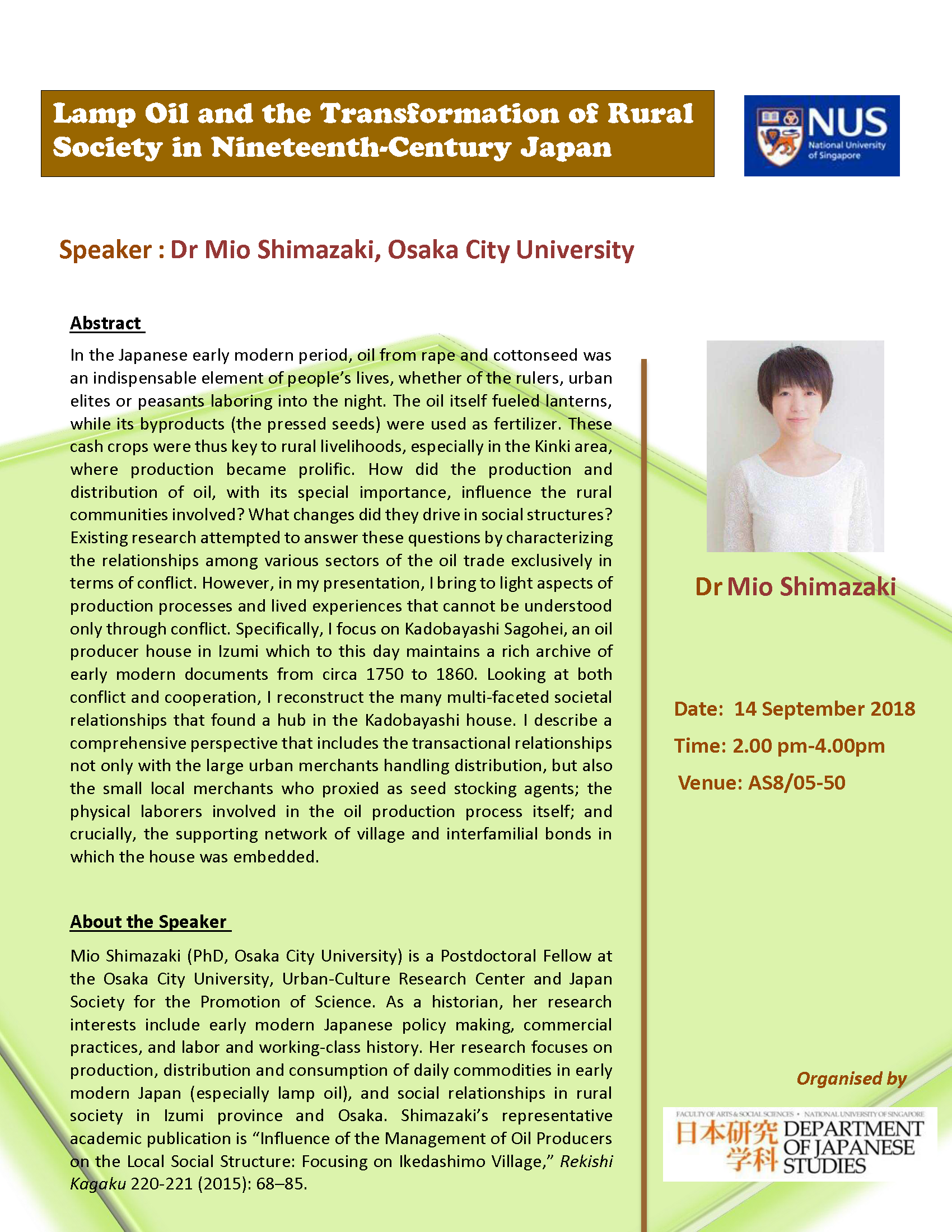Lamp Oil and the Transformation of Rural Society in Nineteenth-Century Japan
Abstract
In the Japanese early modern period, oil from rape and cottonseed was an indispensable element of people’s lives, whether of the rulers, urban elites or peasants laboring into the night. The oil itself fueled lanterns, while its byproducts (the pressed seeds) were used as fertilizer. These cash crops were thus key to rural livelihoods, especially in the Kinki area, where production became prolific. How did the production and distribution of oil, with its special importance, influence the rural communities involved? What changes did they drive in social structures? Existing research attempted to answer these questions by characterizing the relationships among various sectors of the oil trade exclusively in terms of conflict. However, in my presentation, I bring to light aspects of production processes and lived experiences that cannot be understood only through conflict. Specifically, I focus on Kadobayashi Sagohei, an oil producer house in Izumi which to this day maintains a rich archive of early modern documents from circa 1750 to 1860. Looking at both conflict and cooperation, I reconstruct the many multi-faceted societal relationships that found a hub in the Kadobayashi house. I describe a comprehensive perspective that includes the transactional relationships not only with the large urban merchants handling distribution, but also the small local merchants who proxied as seed stocking agents; the physical laborers involved in the oil production process itself; and crucially, the supporting network of village and interfamilial bonds in which the house was embedded.
About the Speaker
Mio Shimazaki (PhD, Osaka City University) is a Postdoctoral Fellow at the Osaka City University, Urban-Culture Research Center and Japan Society for the Promotion of Science. As a historian, her research interests include early modern Japanese policy making, commercial practices, and labor and working-class history. Her research focuses on production, distribution and consumption of daily commodities in early modern Japan (especially lamp oil), and social relationships in rural society in Izumi province and Osaka. Shimazaki’s representative academic publication is “Influence of the Management of Oil Producers on the Local Social Structure: Focusing on Ikedashimo Village,” Rekishi Kagaku 220-221 (2015): 68–85.


